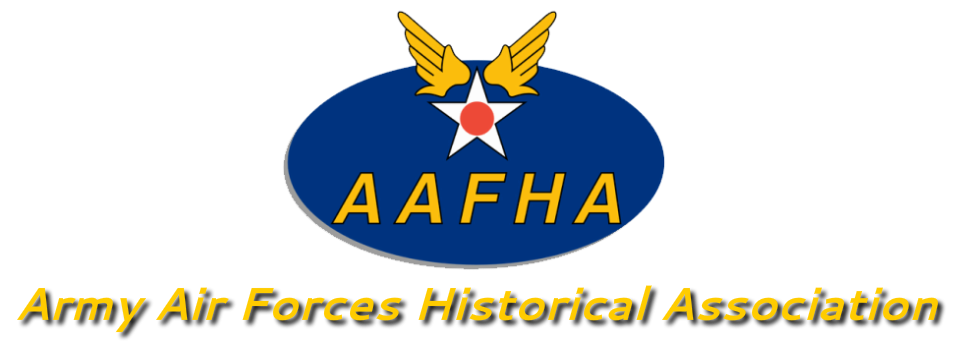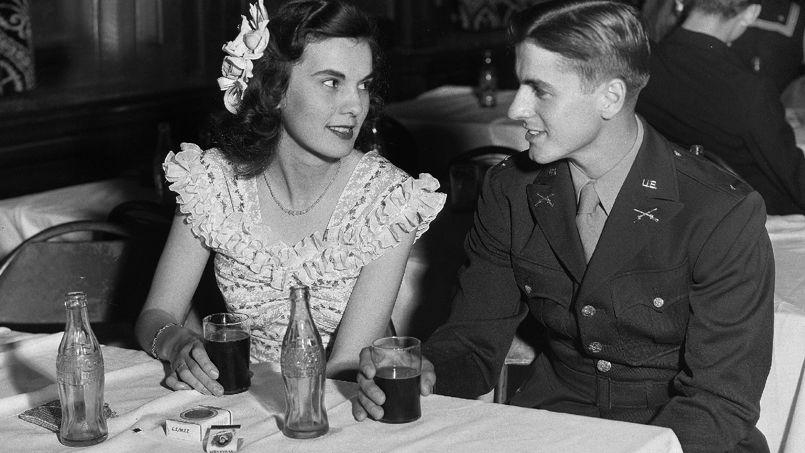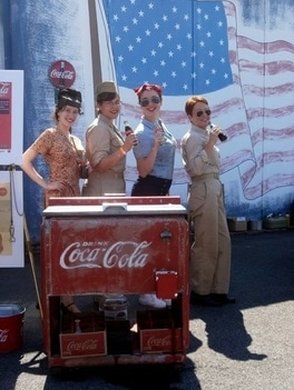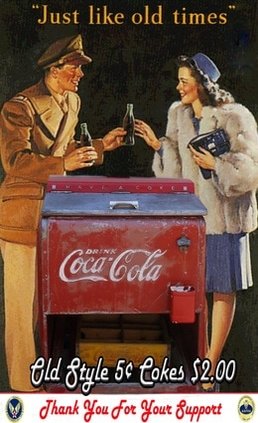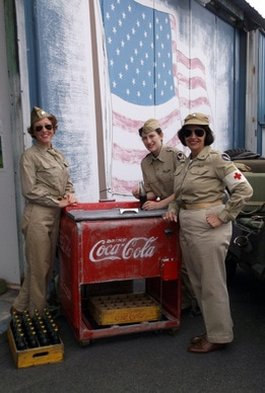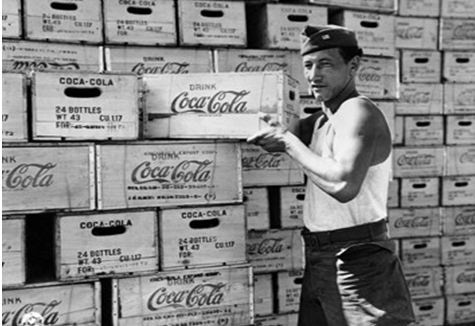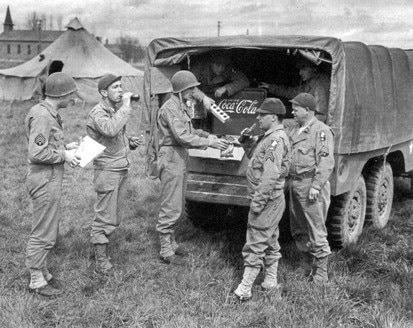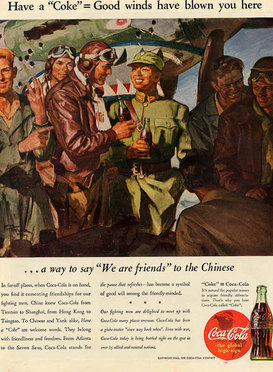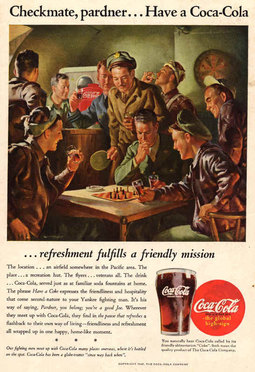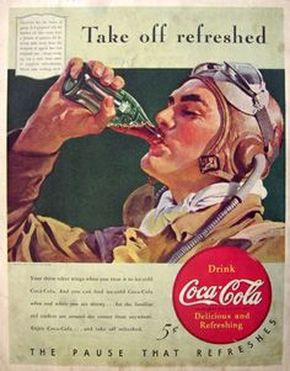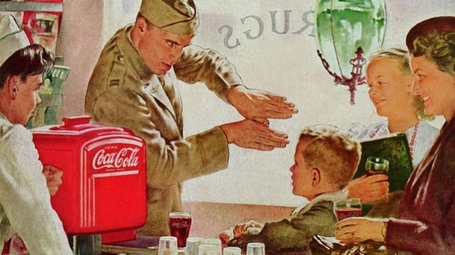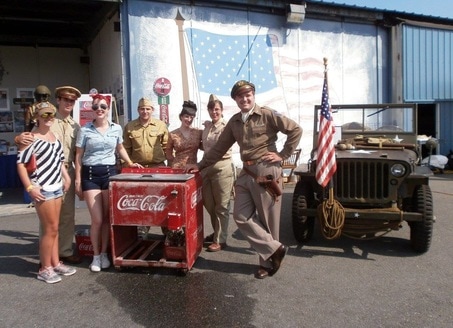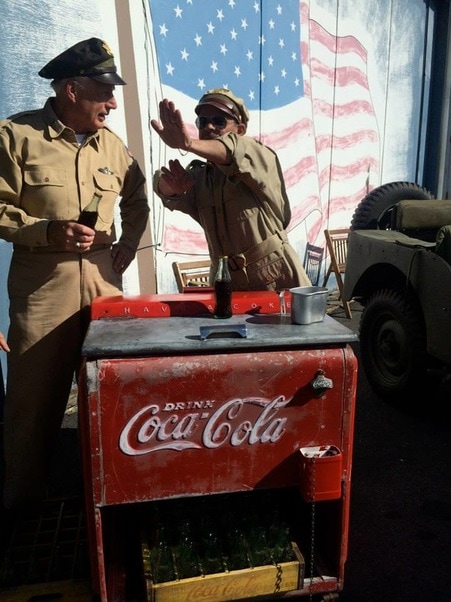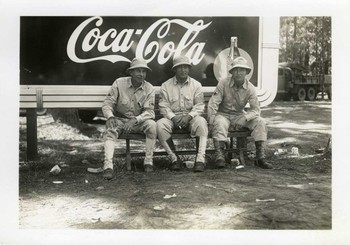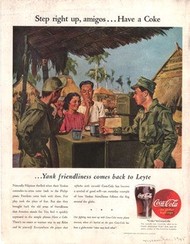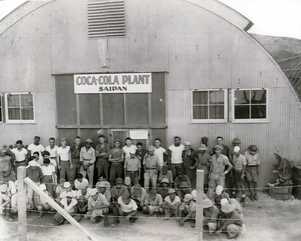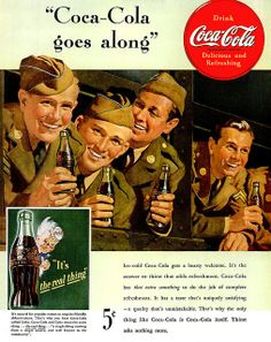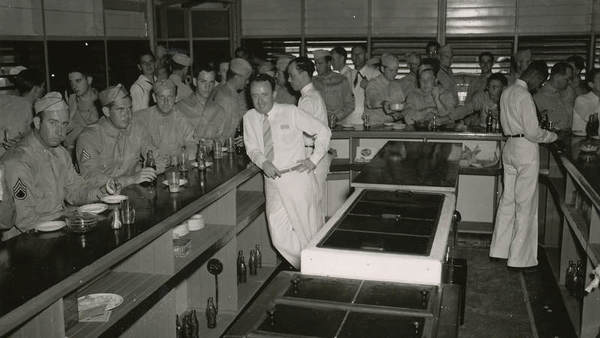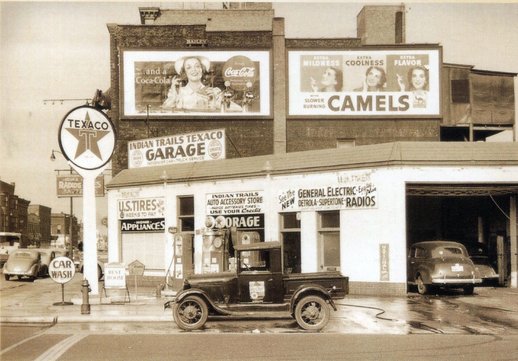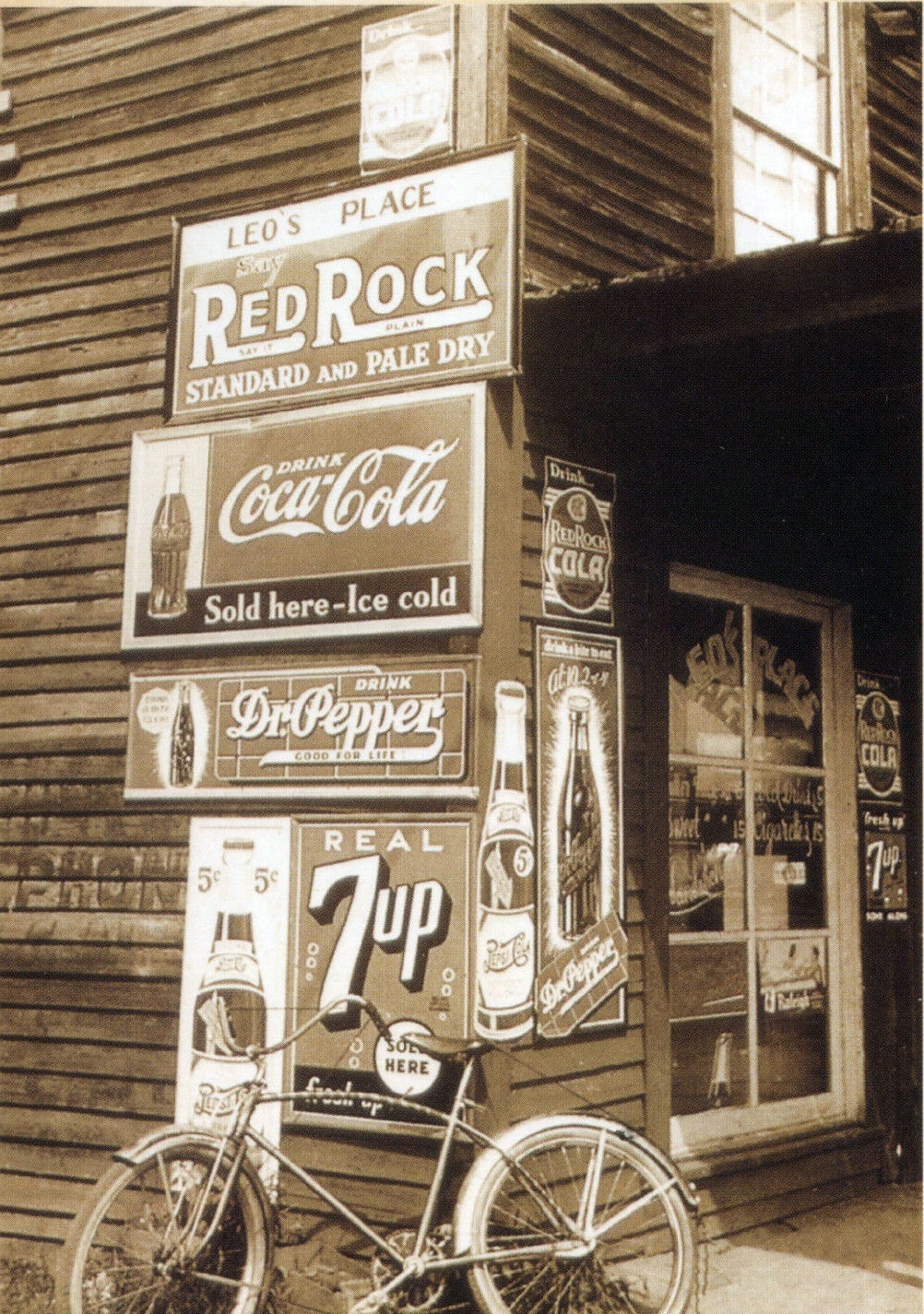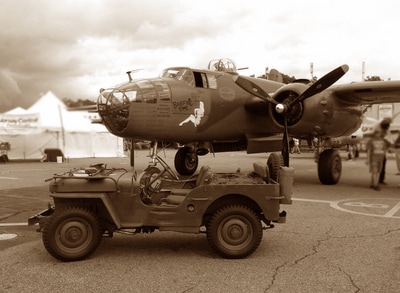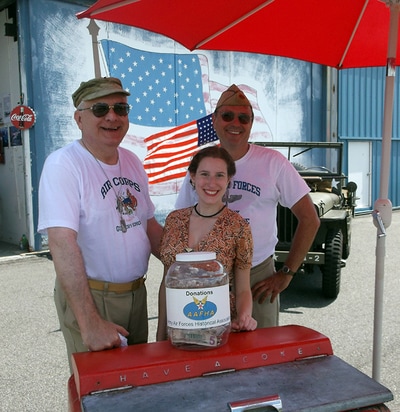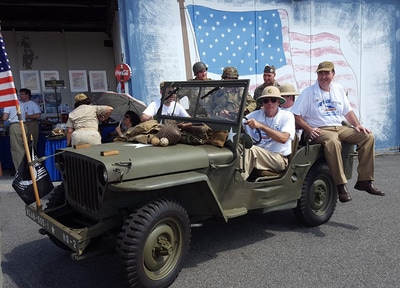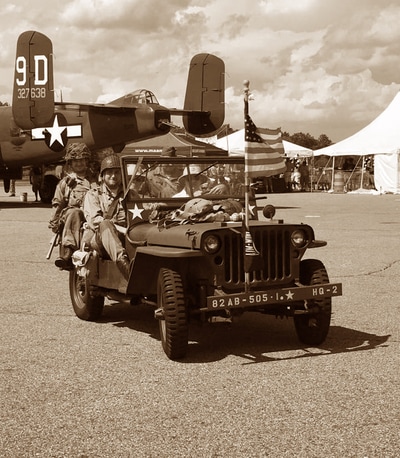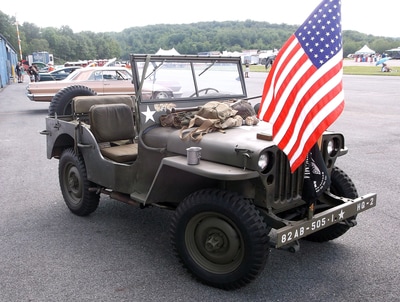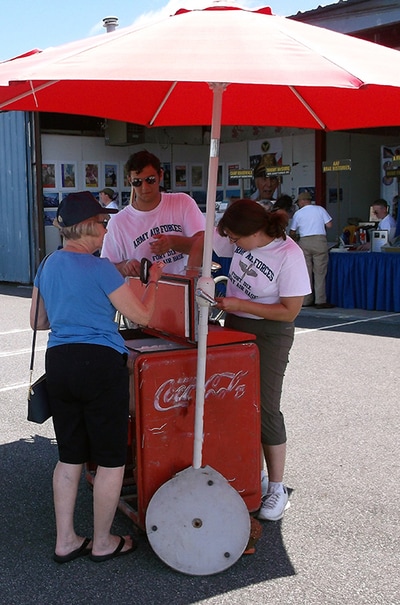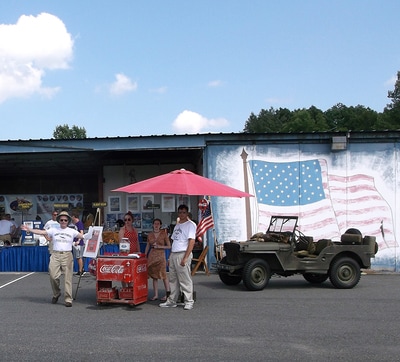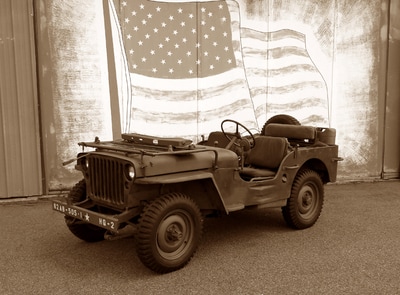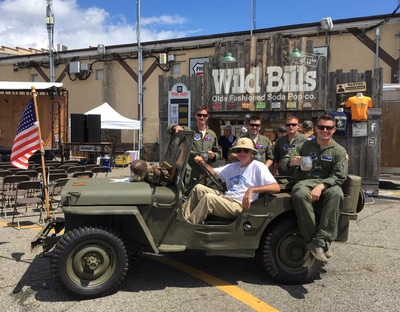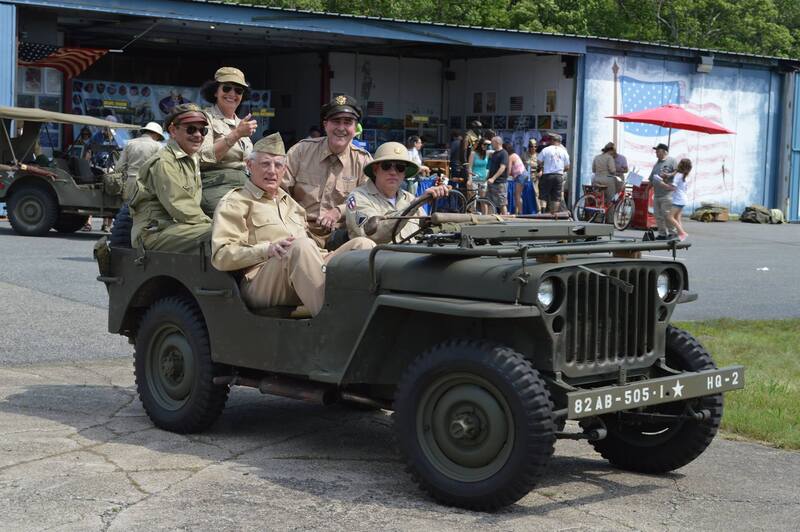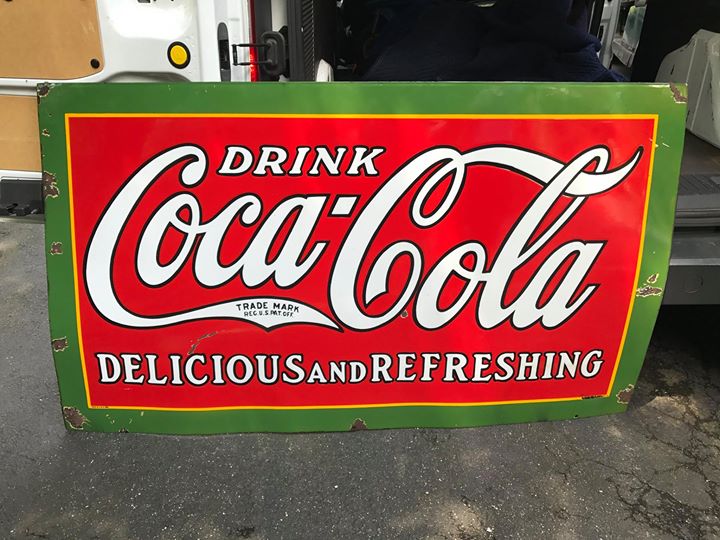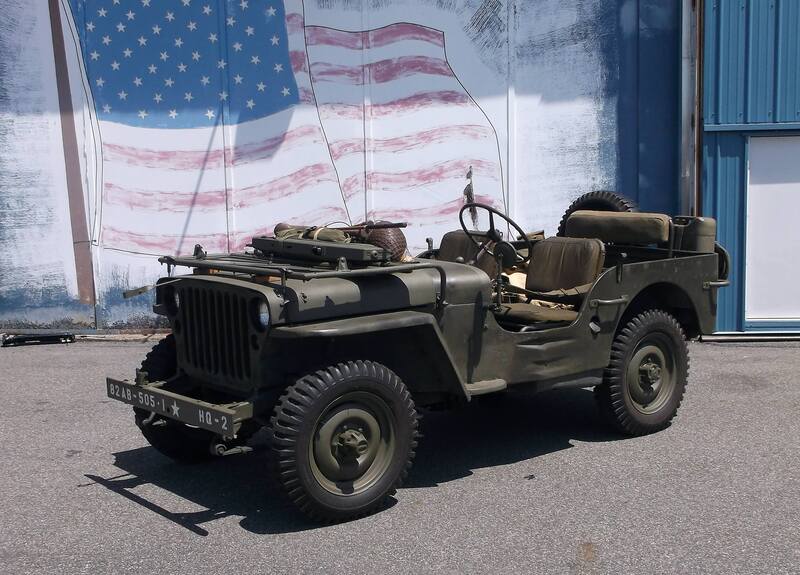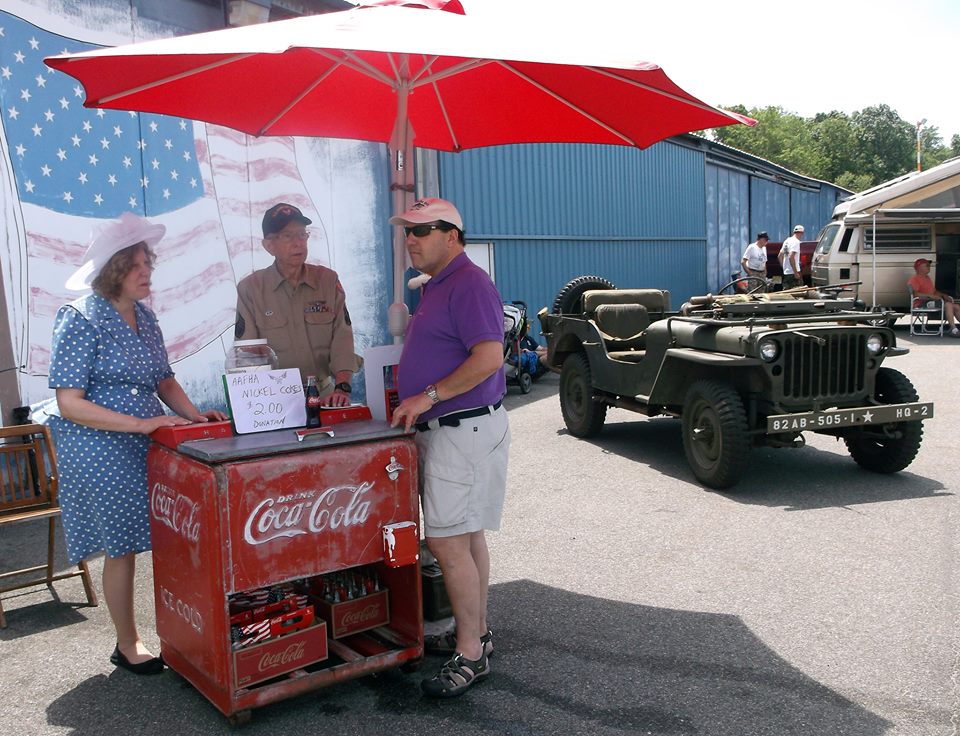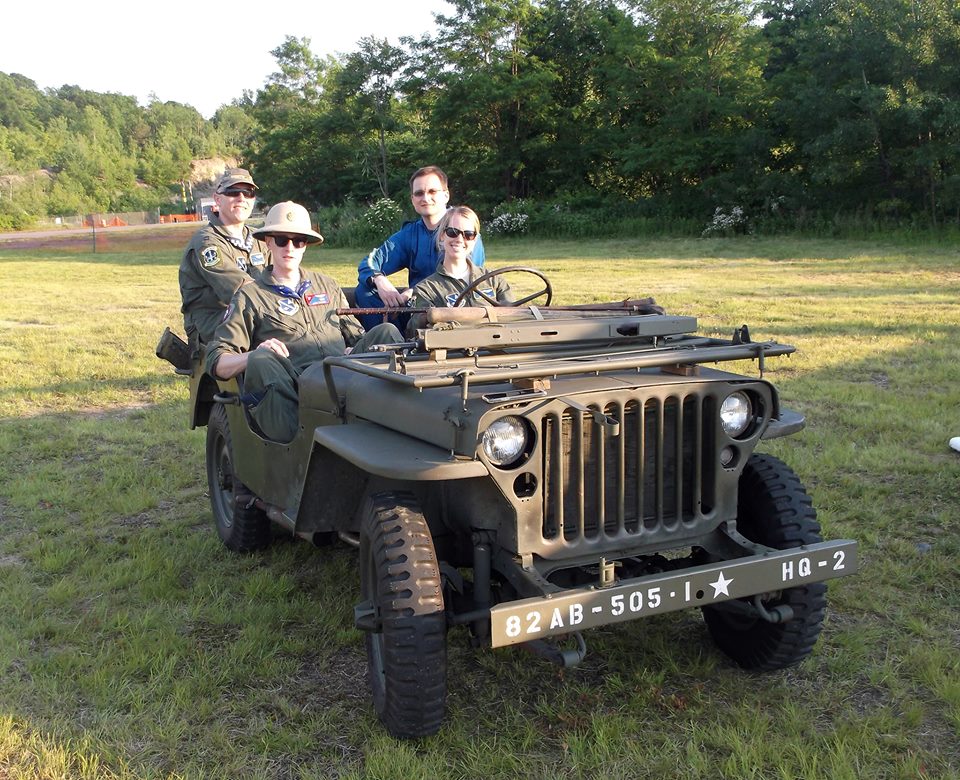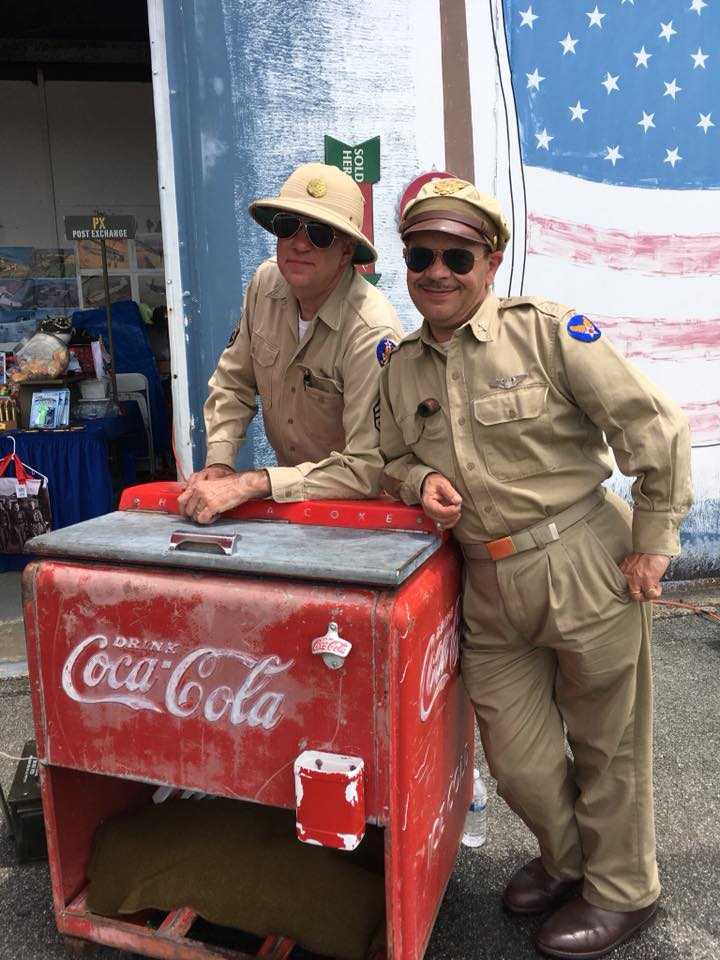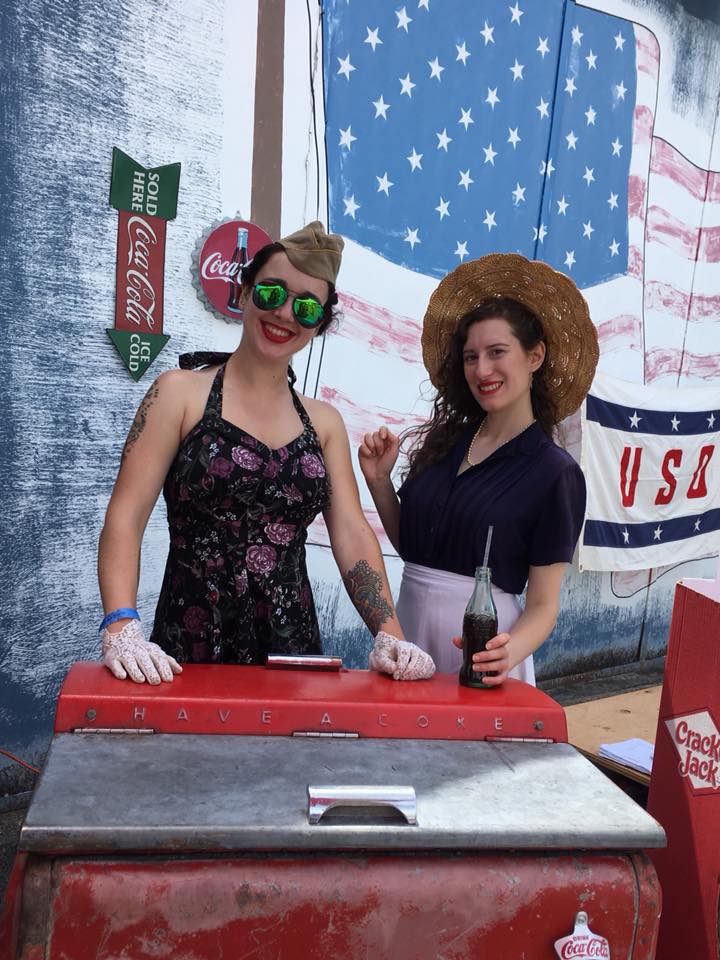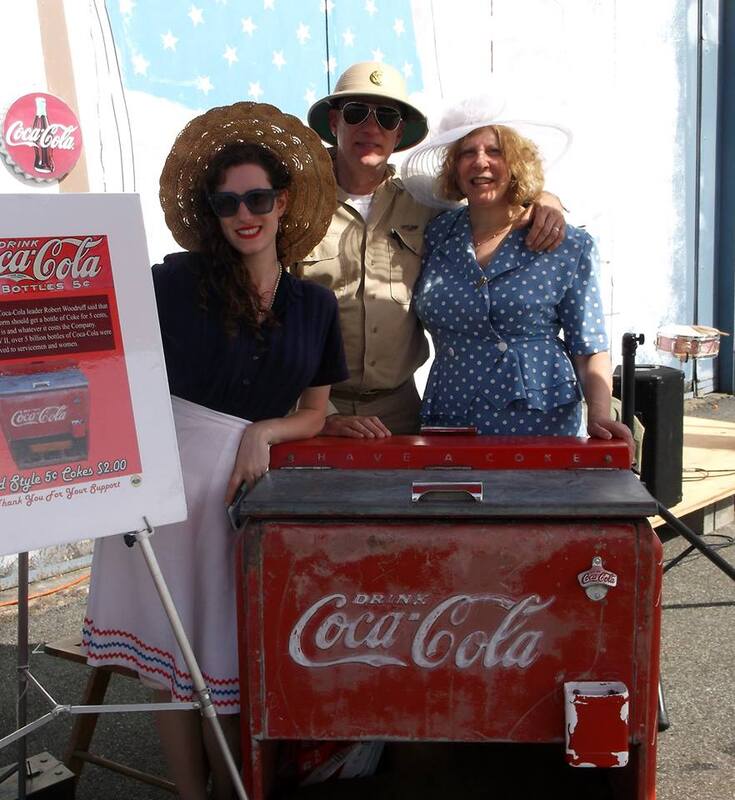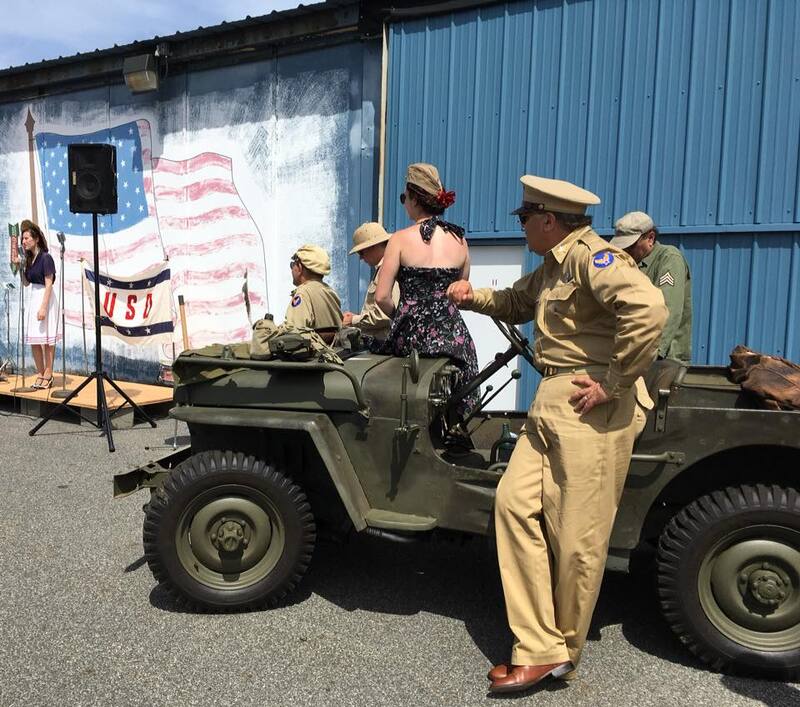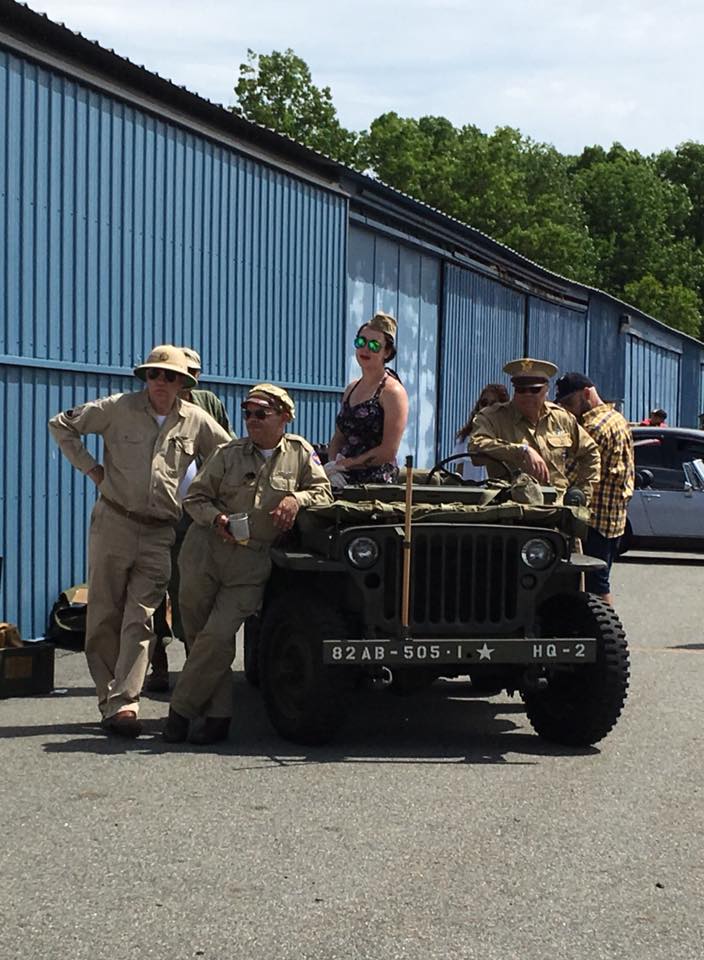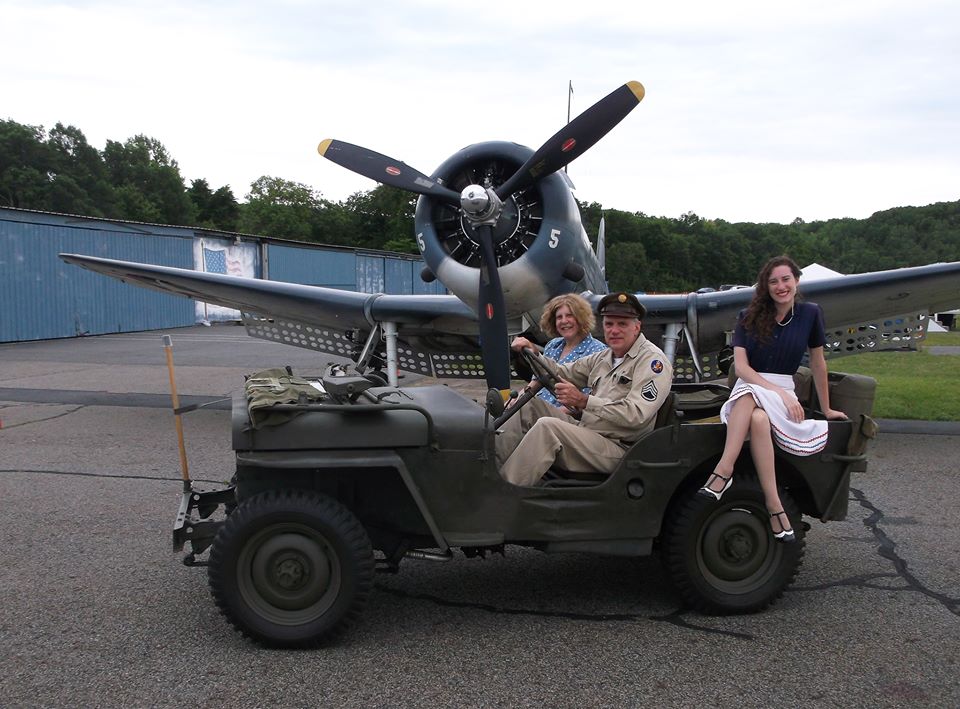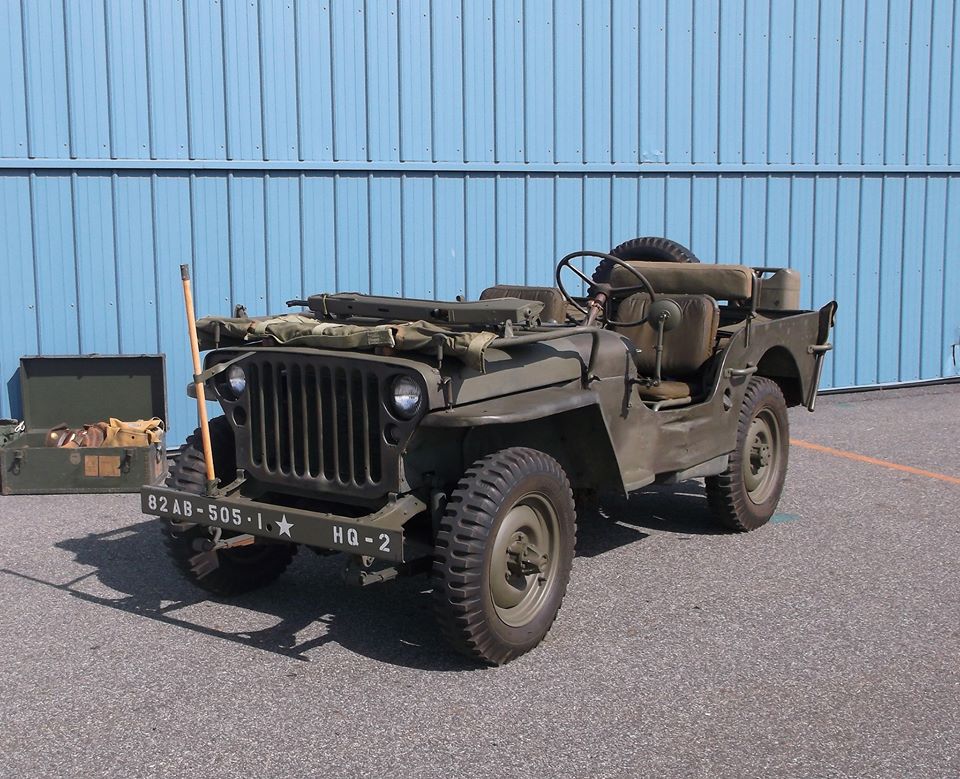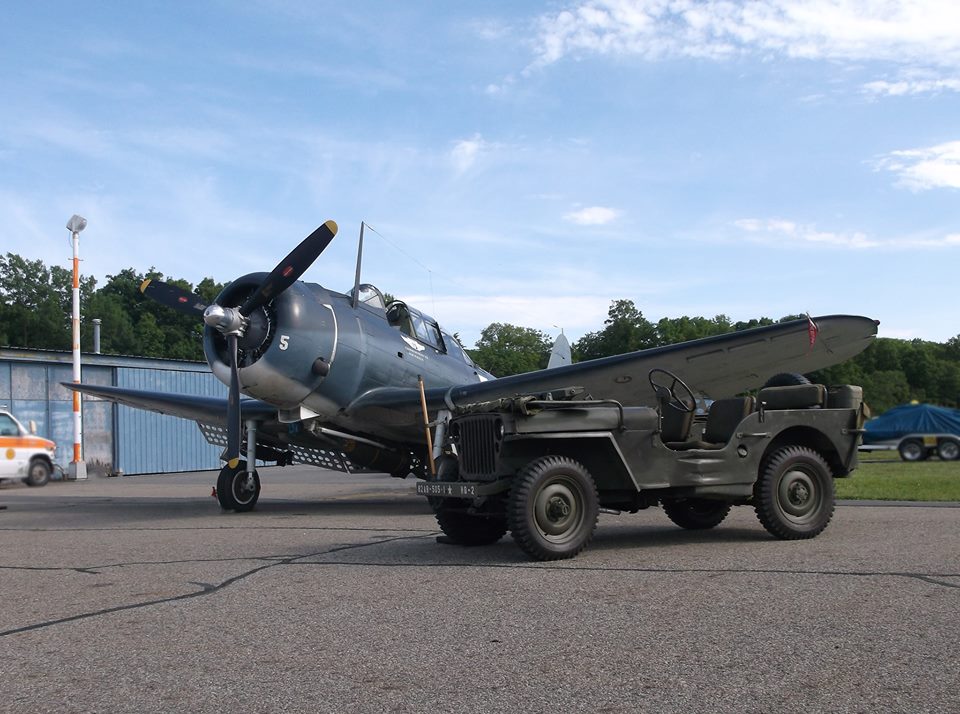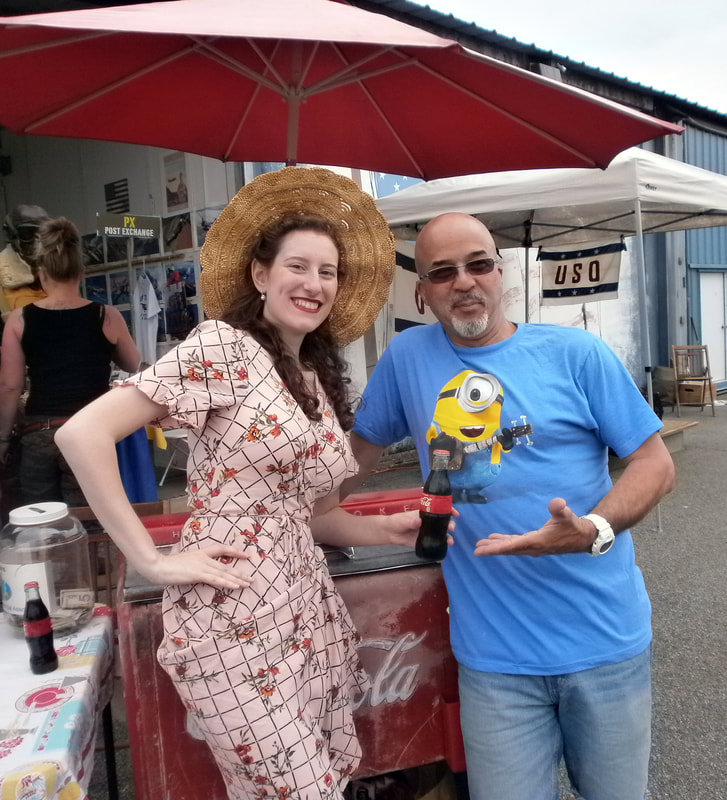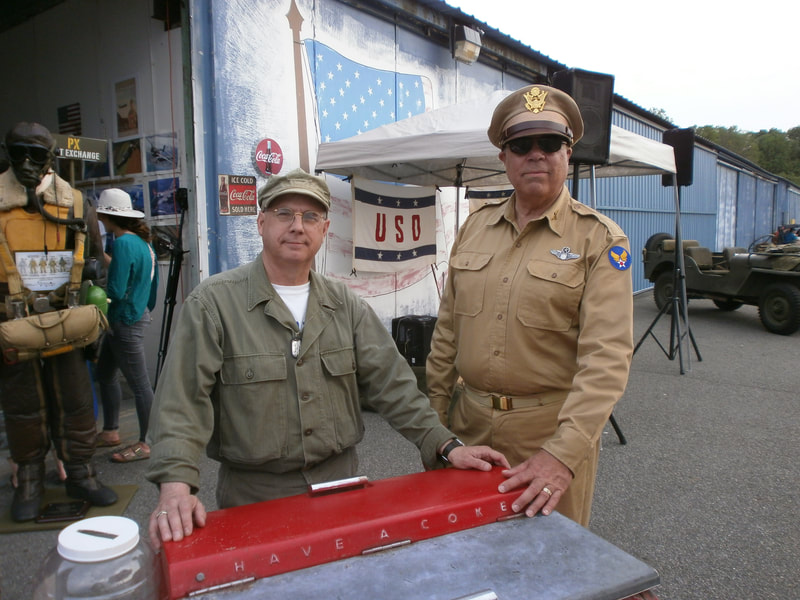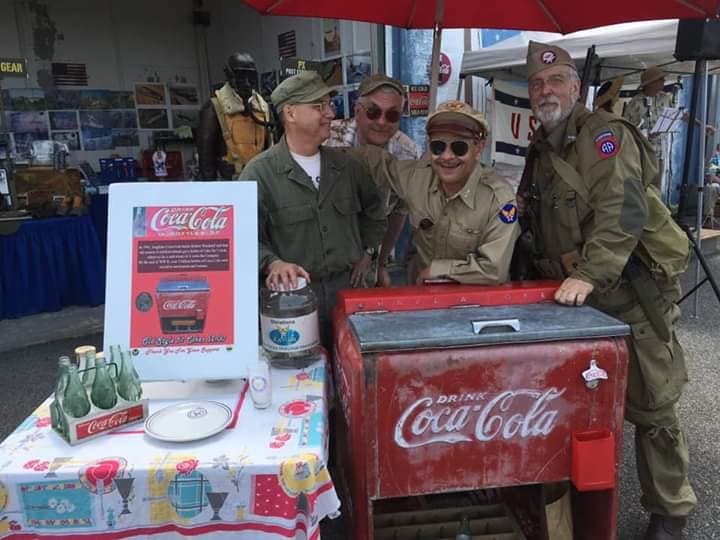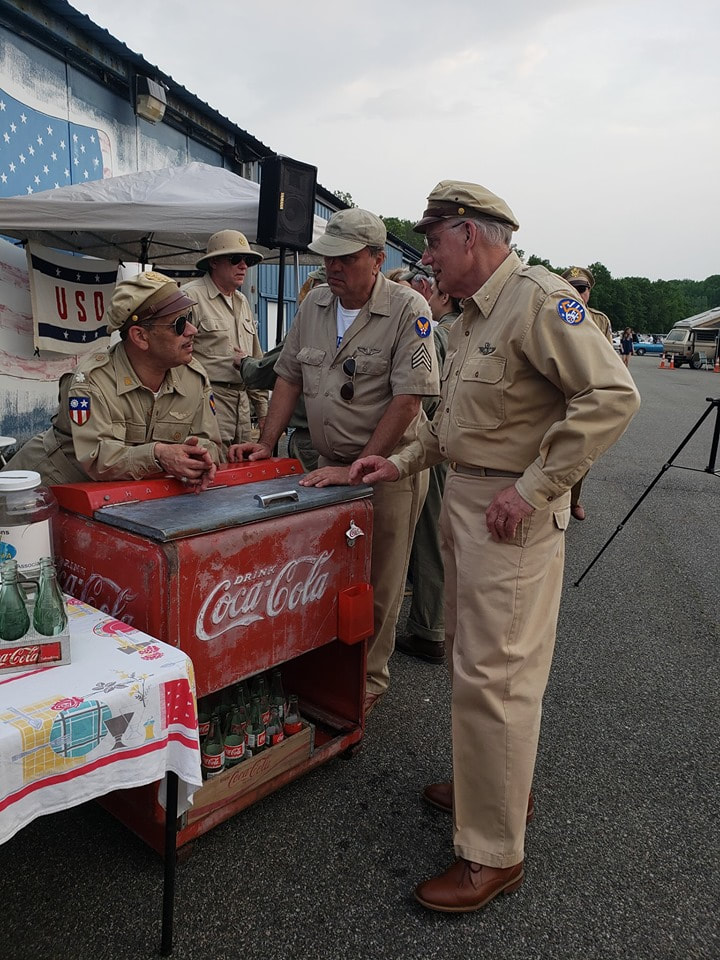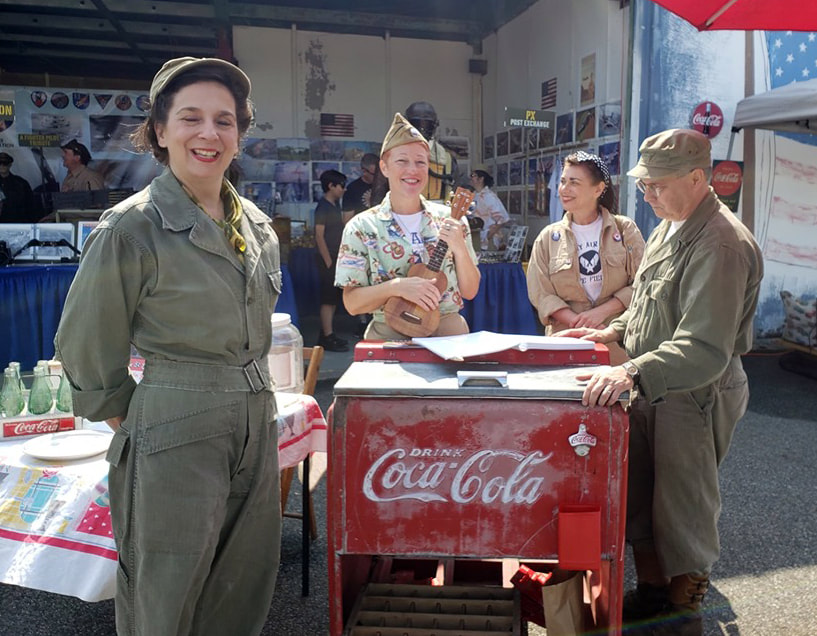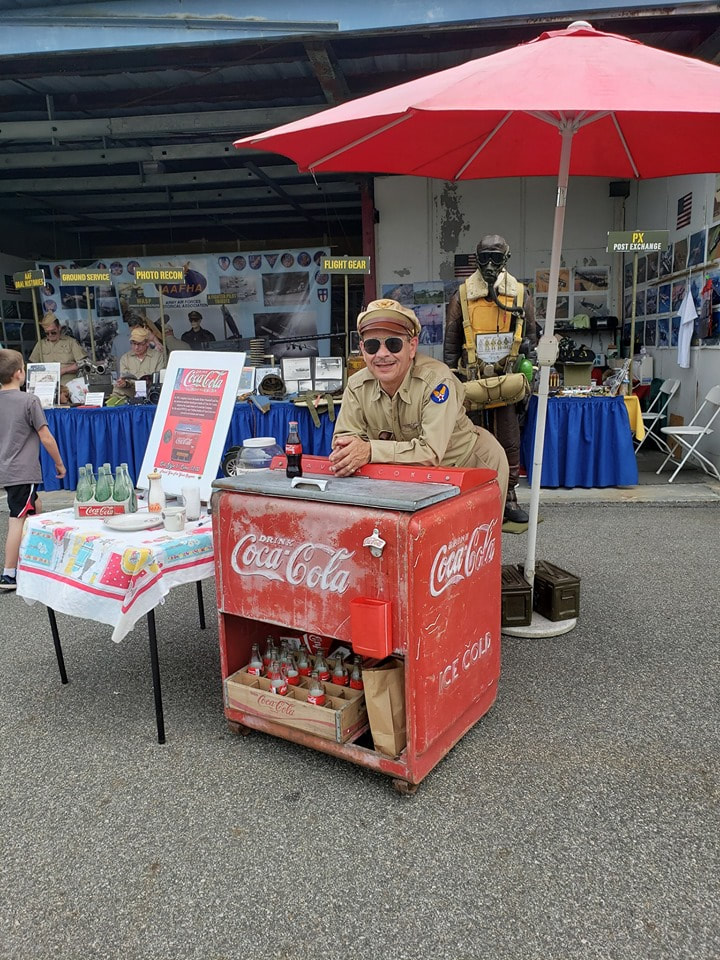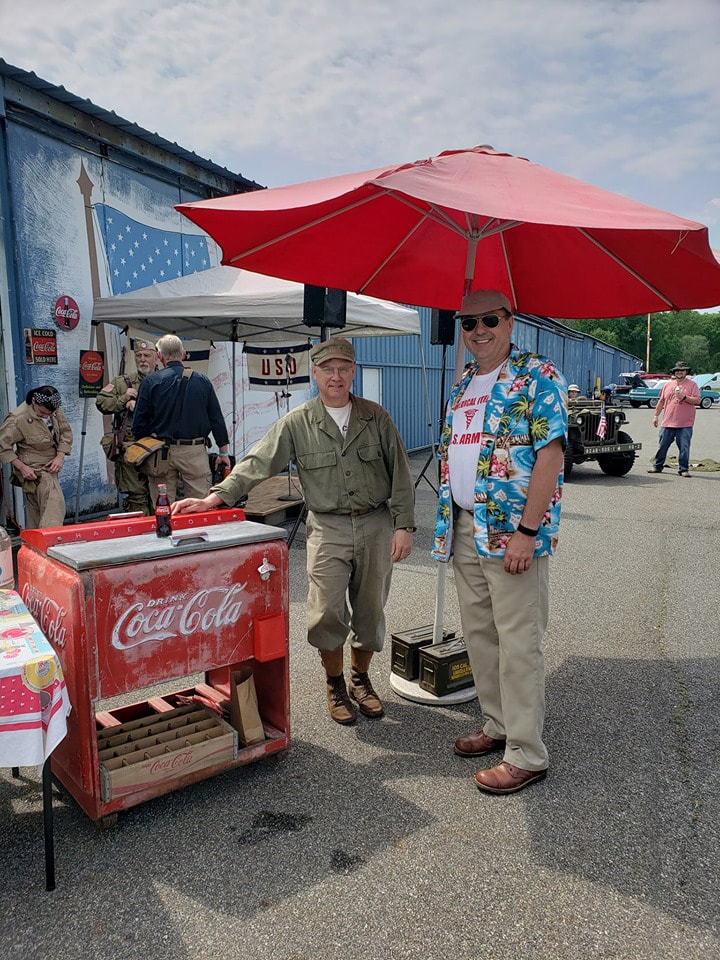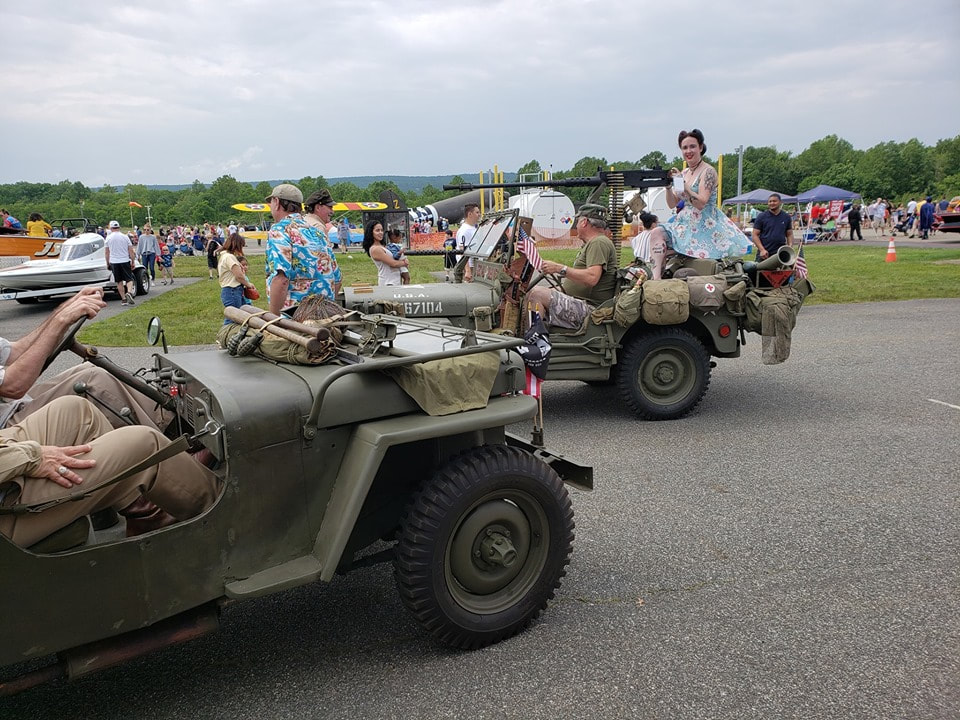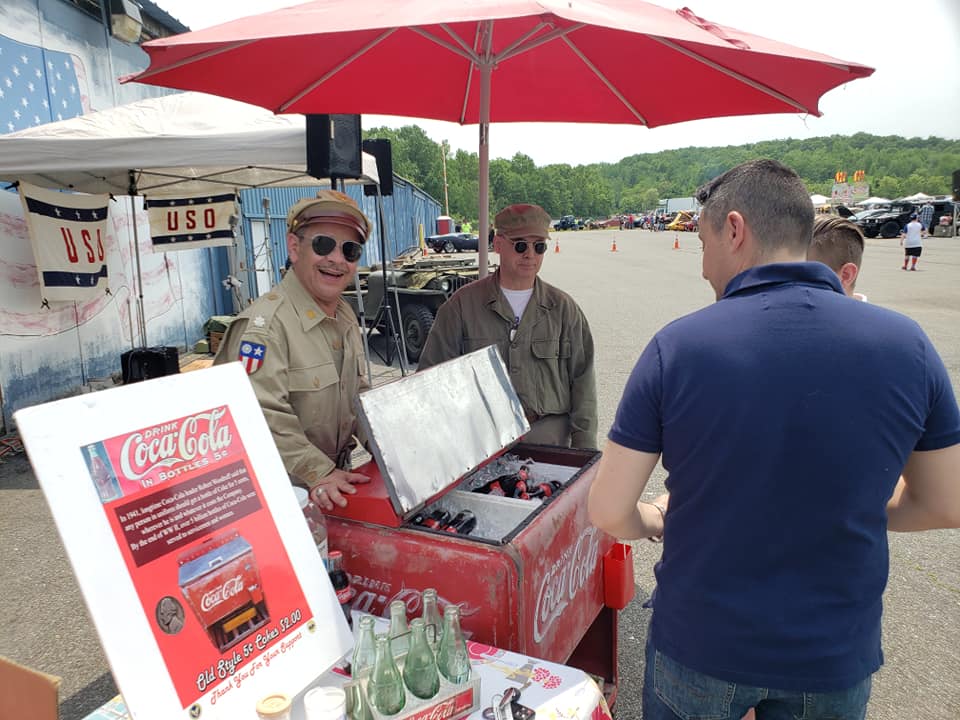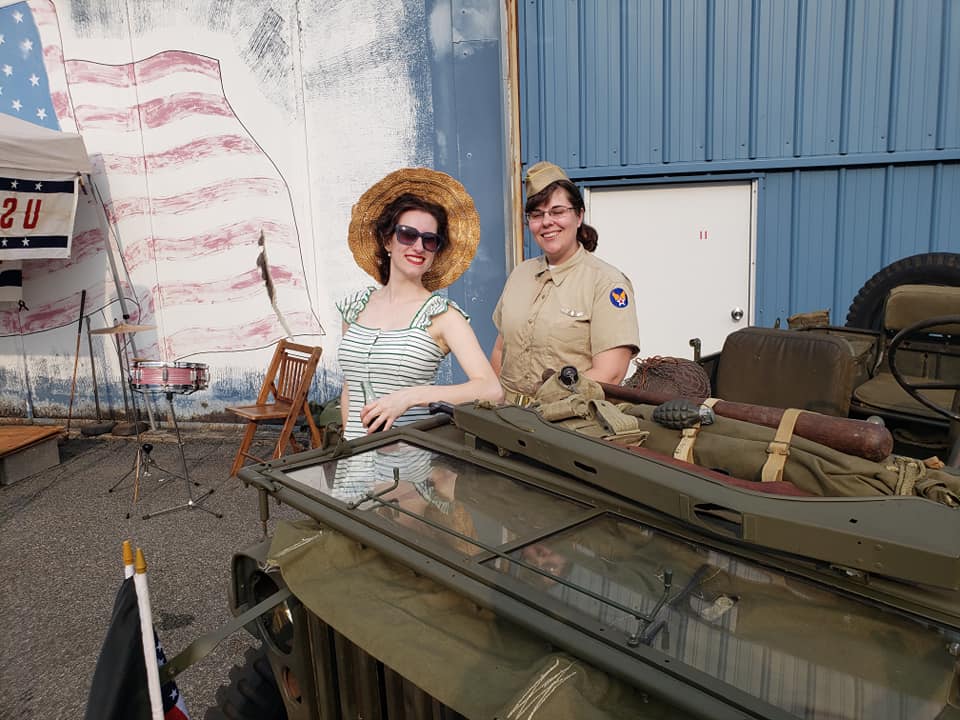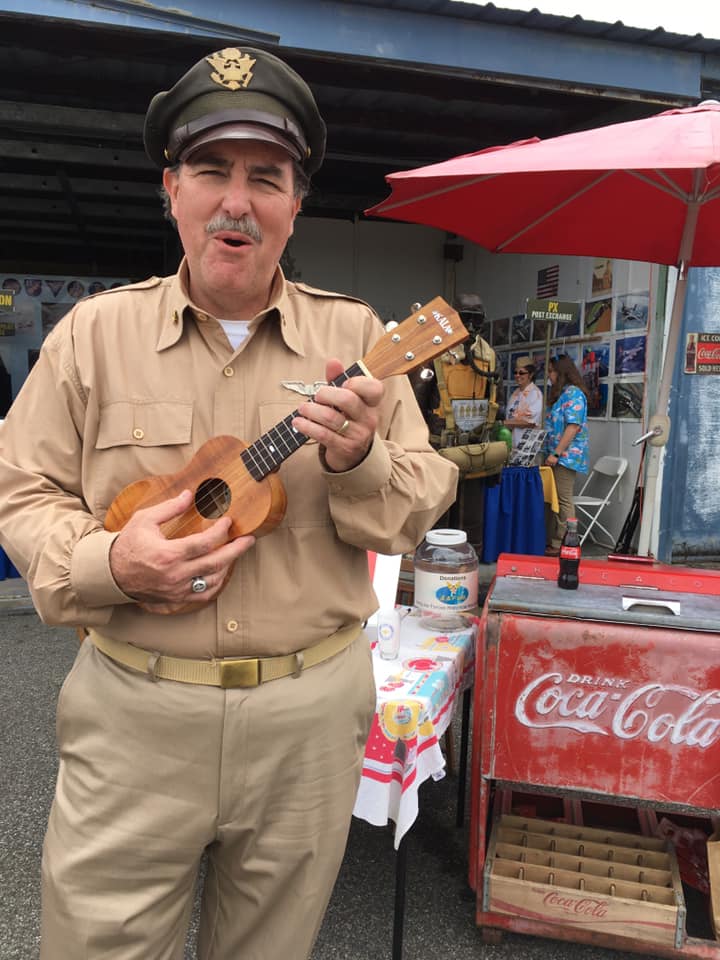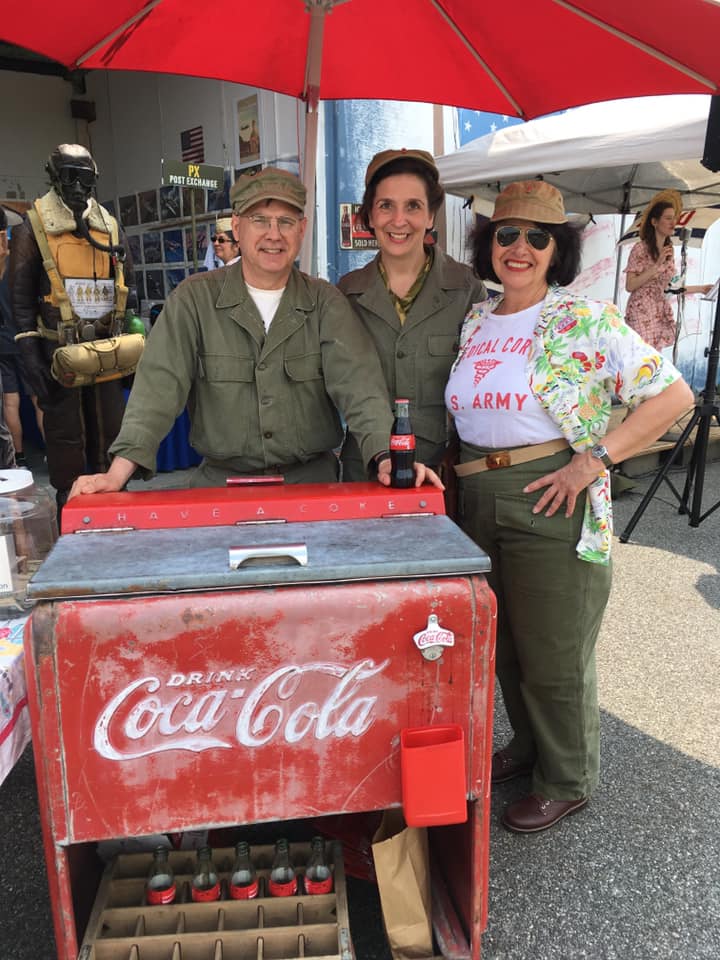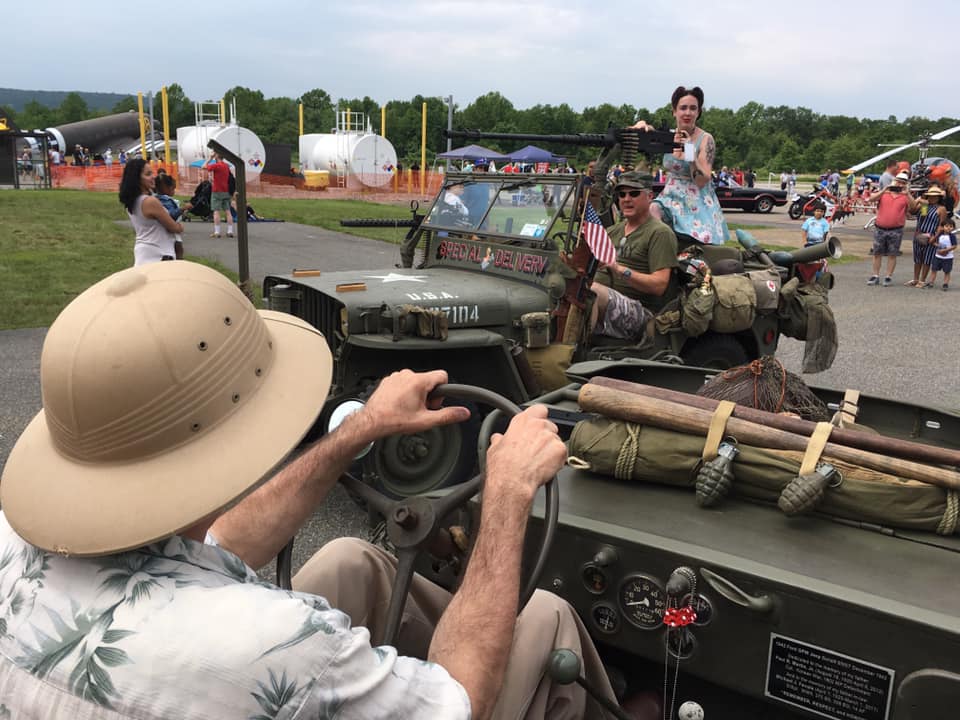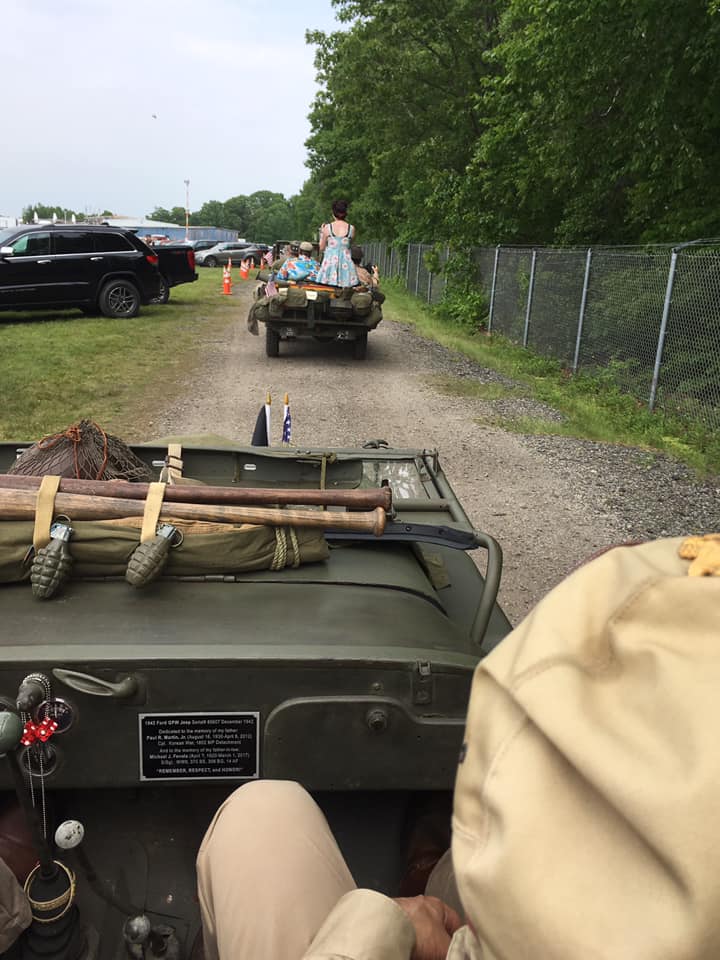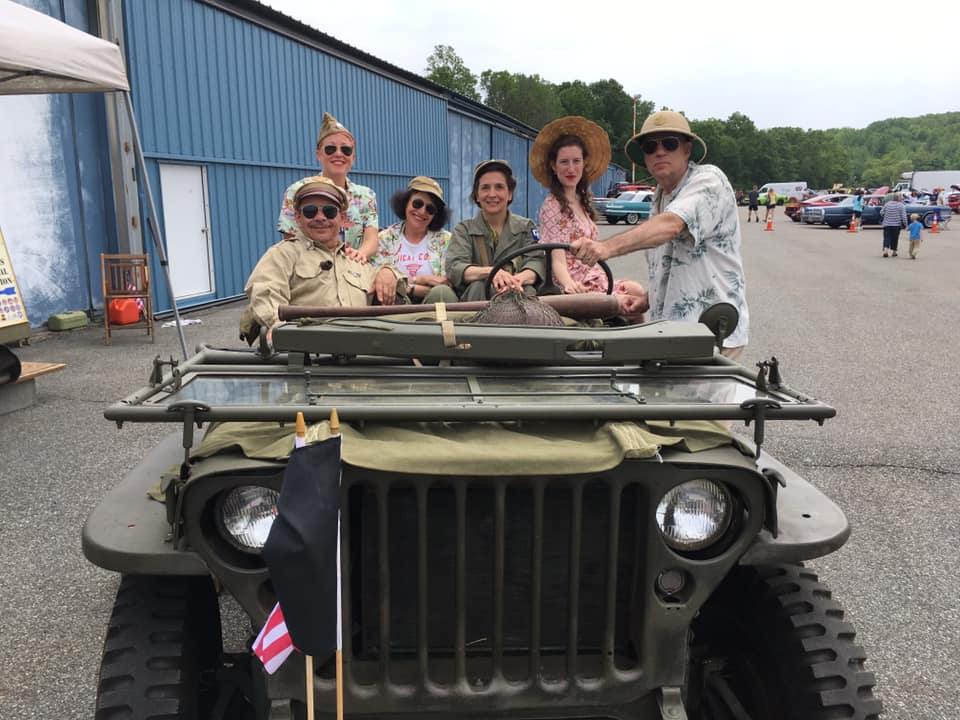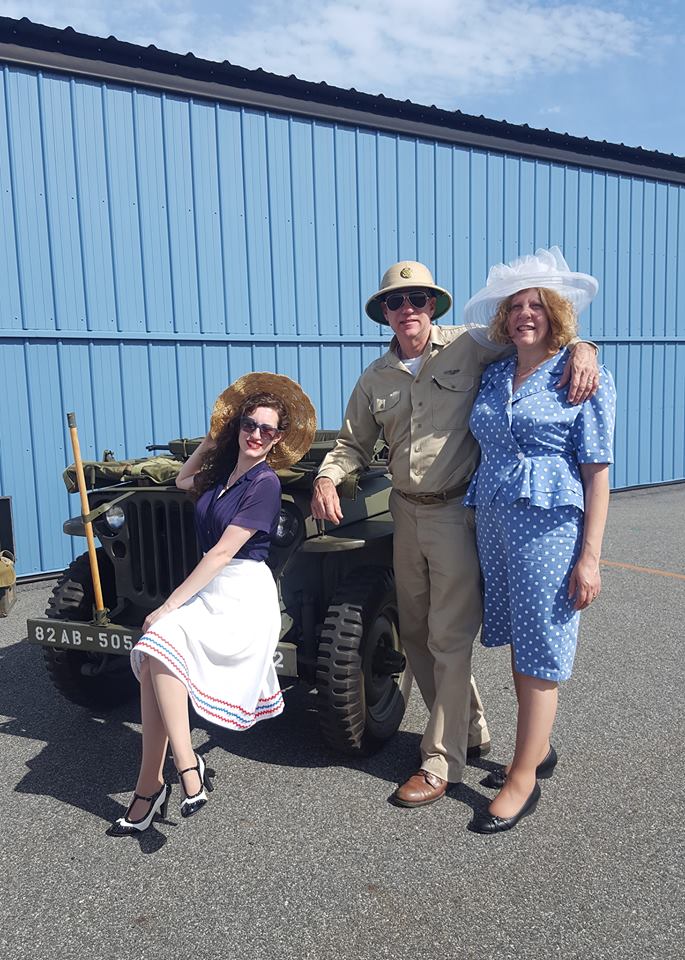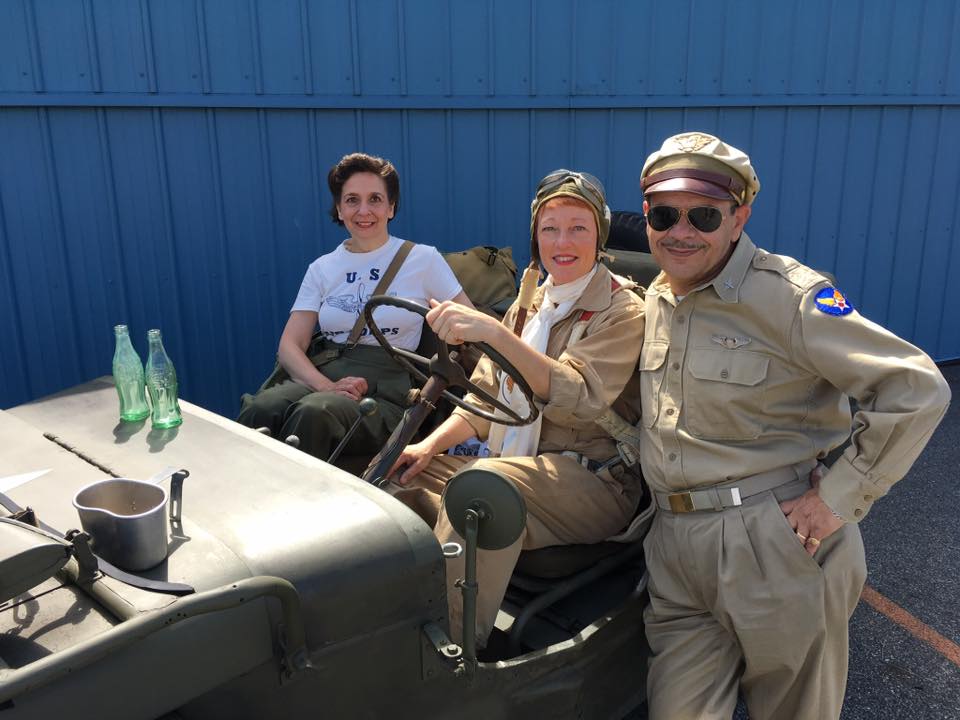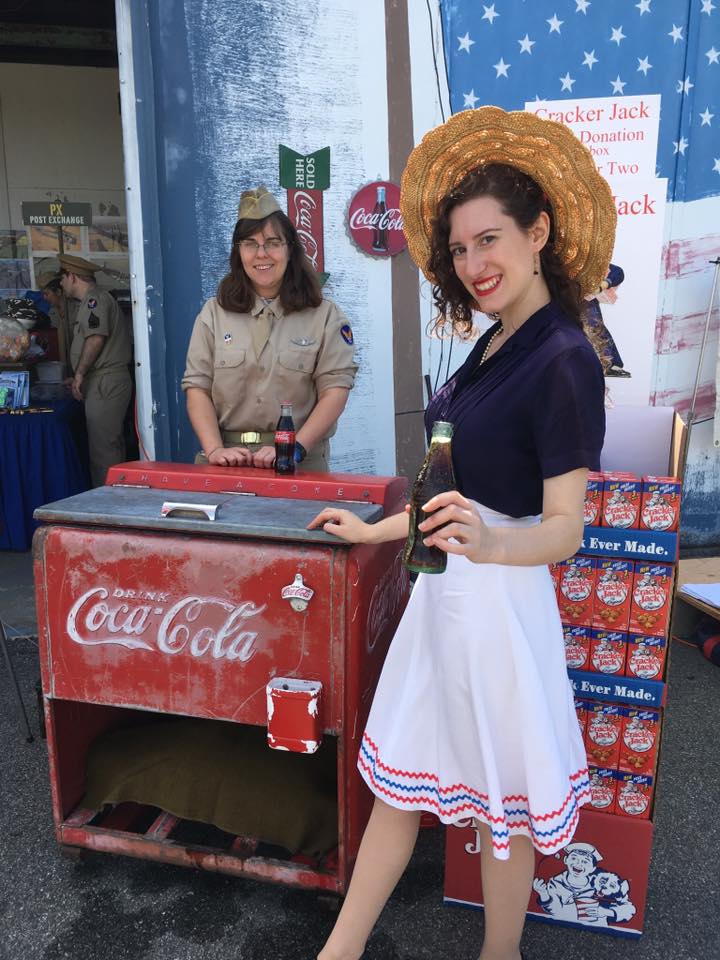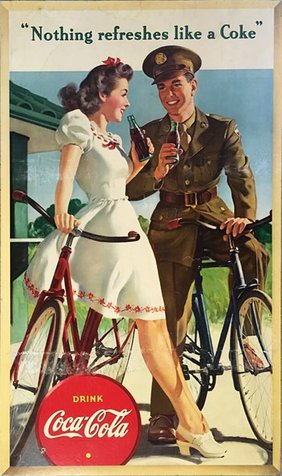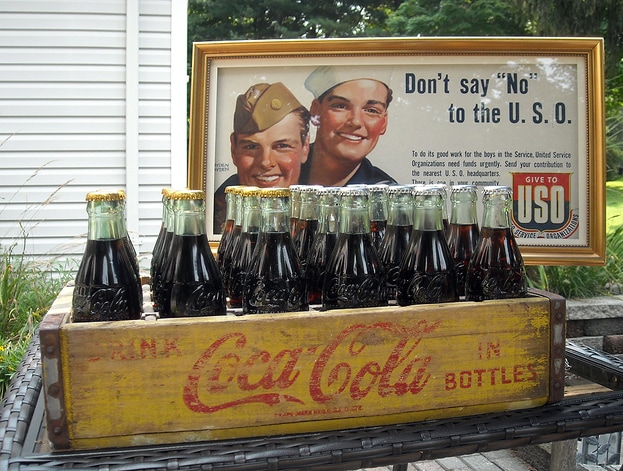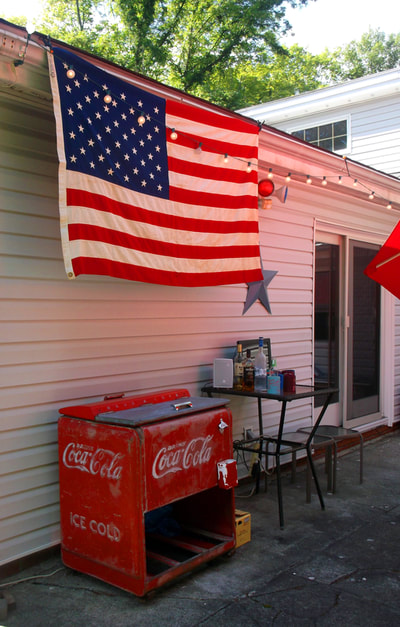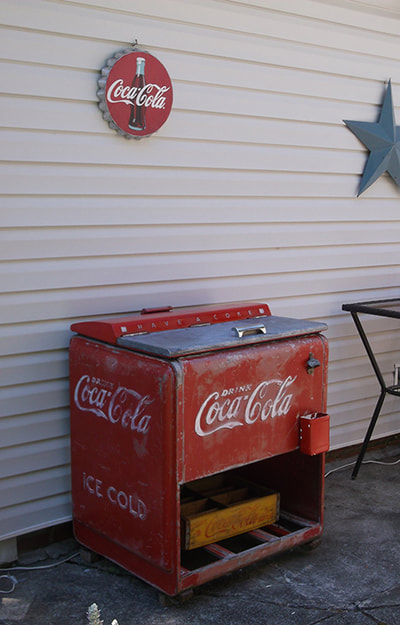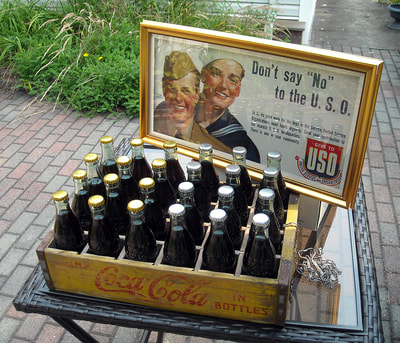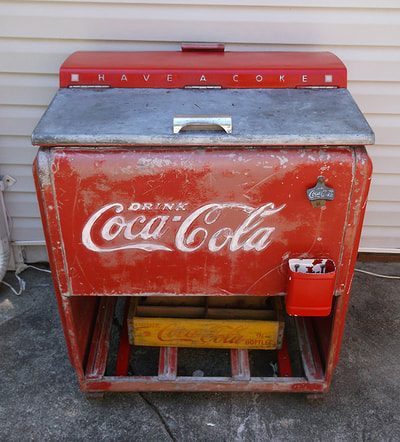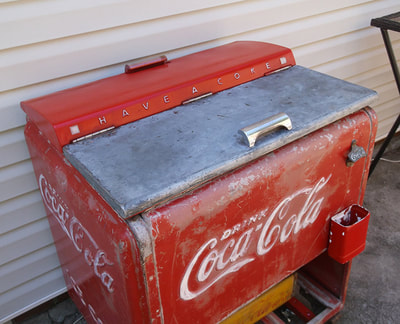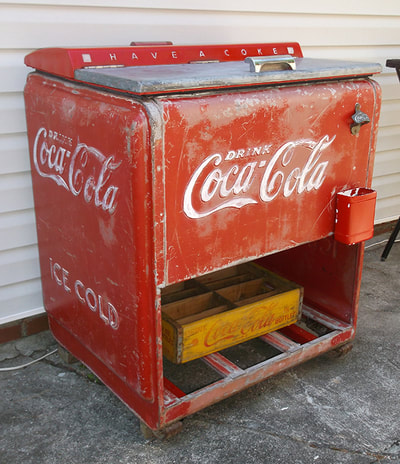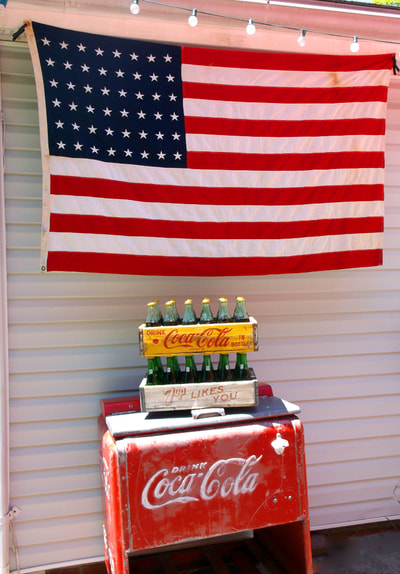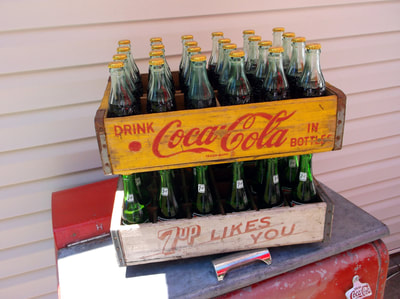A Jeep and a
|
Coca-Cola goes to War.......
Day Of Infamy: Walter Lord, Copyright 1957:
"Dr. Forrest Pinkerton dashed to the Hawaii Electric Company's refrigerator and collected the plasma bottles stored there by the Chamber of Commerce's Blood Bank. He piled it in the back of his car, distributed it to various hospitals, then rushed on the air, appealing for more donors. Over 500 people appeared within an hour, swamping Dr. John Devereux and his three assistants. They took the blood as fast as they could, ran out of containers, and used sterilized Coca-Cola bottles."
"Dr. Forrest Pinkerton dashed to the Hawaii Electric Company's refrigerator and collected the plasma bottles stored there by the Chamber of Commerce's Blood Bank. He piled it in the back of his car, distributed it to various hospitals, then rushed on the air, appealing for more donors. Over 500 people appeared within an hour, swamping Dr. John Devereux and his three assistants. They took the blood as fast as they could, ran out of containers, and used sterilized Coca-Cola bottles."
|
There is nothing more iconic from the Second World War than a Jeep and a nickel coke! AAFHA's extensive WWII Air Force Memorabilia collection includes a 1937 Westinghouse Coca Cola porch cooler and a 1942 Ford Jeep. Dependent upon the distance and transport considerations to various events or airshows, we include them in our display. Stop on by to see our Jeep and grab an ice cold nickel Coke from our cooler for a nominal donation to AAFHA.
|
In 1941, longtime Coca-Cola leader Robert Woodruff said that any person in uniform should get a bottle of Coke for 5 cents, wherever he is and whatever it costs the Company. During WWII, a special group of Coca-Cola employees called Technical Observers were asked to fulfill Woodruff's promise. The "TOs" supervised the shipment and operation of 64 complete bottling plants that distributed over 5 billion bottles of Coca-Cola to servicemen and women. One hundred forty-eight men served as TOs, compete with Army officer's rank, pay and uniforms that had a unique identification patch. Two TOs were killed in the line of duty.
Providing Coke to troops in remote areas of the South Pacific posed one of the most difficult problems to the TOs. The Brisbane, Australia, bottler offered one solution to the problem when he re-commissioned a portable soda fountain that had been used at drugstore conventions and had it flown into the hills to quench the thirsts of B-26 pilots. It was so successful that the Army requested a hundred more immediately.
Technicians from the Coca-Cola Export Corporation, working with the Liquid Carbonic and Hussman-Ligonier Companies, quickly developed a portable dispensing unit know as a "jungle fountain." Combining a standard Junior Dole Dispenser with an ice-making machine, the unit could be easily transported by truck to any location.
Nearly 1,100 of these units were used in the Pacific. Tragedy struck an early shipment of 150 "jungle fountains" when the transport ship carrying them was torpedoed, but replacements soon reached the troops. This magazine ad (above) shows a drawing of a jungle dispenser -- painted green for camouflage, of course!
Coke and the U.S. troops: By: Phil Mooney | Nov 11, 2008 http://www.coca-colacompany.com/stories/coke-and-the-us
Coke and the U.S. troops: By: Phil Mooney | Nov 11, 2008 http://www.coca-colacompany.com/stories/coke-and-the-us
